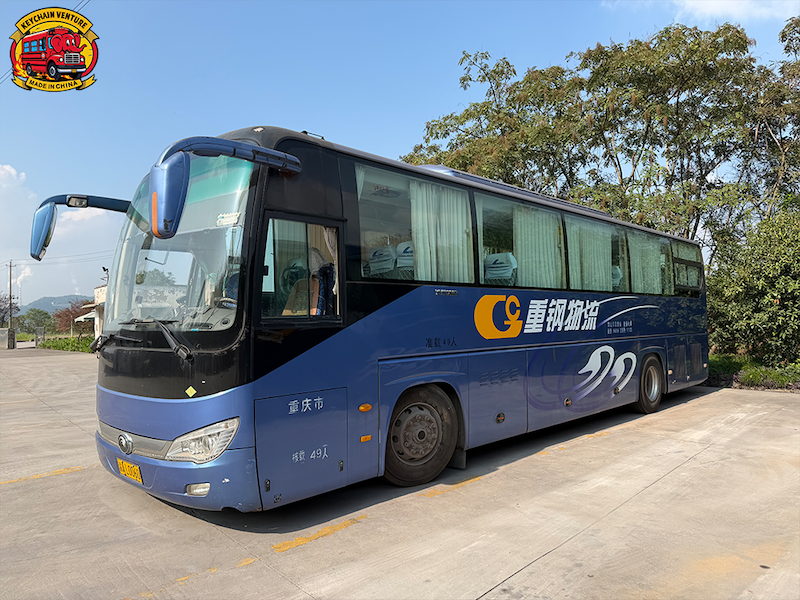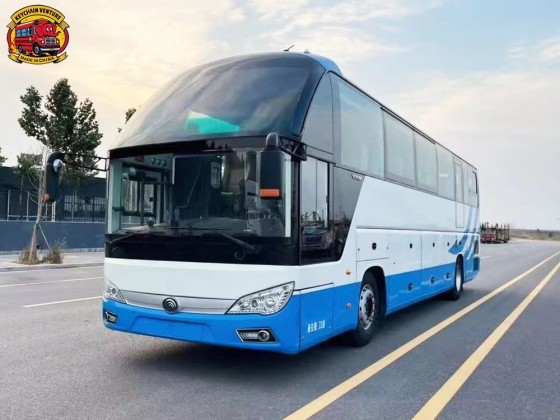Views: 222 Author: Amanda Publish Time: 2025-11-18 Origin: Site








Content Menu
● The Shift Toward Contactless Payments in Public Transit
>> Benefits of Using Debit Cards on Buses
● How Does This Work on Buses?
● The Role of Used Buses and Modern Payment Integration
>> Advantages of Equipping Used Buses with Modern Payment Tech
● Global Examples of Contactless Debit Card Use on Buses
● Tips for Using Debit Cards on Buses
● FAQ
>> 1. Can I use any debit card on a bus?
>> 2. Are there extra fees when paying with a debit card on a bus?
>> 3. What if the bus doesn't accept debit cards?
>> 4. Can I use my debit card for fare transfers?
>> 5. How secure is using a debit card on public buses?
Public transportation systems around the world are rapidly adopting modern payment technologies to make fare collection more convenient, efficient, and accessible for riders. Among the most popular innovations is the ability to pay for bus fares using debit cards. This article delves into the practicalities of using debit cards on buses, explores the global trend of contactless payments in public transit, highlights how used buses can be upgraded to support this technology, and provides useful tips for riders. It is designed not only for regular commuters but also for commercial vehicle suppliers like KeyChain Venture Co., Ltd., who provide high-performance buses equipped for modern transit needs.

Today, passengers can pay for their bus rides by simply tapping a contactless debit card or mobile payment device on a reader at boarding. This method, known as open-loop contactless payment, has surged in popularity because it offers the convenience of retail payment integrated directly with transit fare collection. Unlike closed-loop transit cards (e.g., London's Oyster or Hong Kong's Octopus cards), open-loop uses existing bank-issued debit or credit cards, eliminating the need for riders to carry multiple cards or cash.
By 2025, over 500 cities worldwide implement contactless payment systems, allowing passengers an easy, cash-free journey experience. For example, Transport for London (TfL) revolutionized fare payments by enabling contactless bank cards on their buses and Tube, with contactless payments rising to almost 80% of revenue by 2024. Other cities like New York, Vancouver, Boston, and many in China support similar systems integrating debit card payments with transit services.[1][2][3][4][8]
- Speed and Efficiency: Boarding becomes faster as riders avoid fumbling with cash or ticket machines. Quick tap-and-go transactions reduce dwell times at stops.
- Convenience: No need to carry exact change or buy/loading transit-specific passes. Visitors and occasional users especially benefit.
- Safe and Secure: Contactless payments use encrypted technology, minimizing fraud risk during transactions.
- Fare Capping and Transfers: Some cities enable debit card payments to automatically cap daily or weekly fares and allow free transfers within a time window.[5][8]
To pay bus fare with a debit card:
1. Identify Contactless Readers: These machines are usually located near the driver or entrance.
2. Tap the Card or Device: Hold the debit card or payment-enabled phone/smartwatch close to the reader.
3. Payment Confirmation: A beep or green light indicates successful payment; a red light or error message means try again.
4. Keep Your Card Ready: Having your card accessible shortens boarding time and avoids delay.
5. Monitor Transactions: Use your bank app for fare deductions and alerts.
Some systems support mobile payments like Apple Pay or Google Pay, adding further flexibility.[2][4]
KeyChain Venture Co., Ltd. stands as a leader in delivering used buses and heavy-duty trucks with modern capabilities. For urban transit agencies and operators, purchasing used buses retrofitted with contactless payment readers offers a sustainable and cost-effective way to modernize fleets without full vehicle replacements. Technology such as EMV-supported fare validators can be installed on vehicles to accept debit cards, credit cards, and mobile payments seamlessly.
- Cost-Effective Modernization: Upgrading used buses reduces investment while maintaining up-to-date fare collection standards.
- Compliant with Transit Policies: Many municipalities require cashless fare options aligning with public health and convenience initiatives.
- Boosted User Satisfaction: Riders are more likely to choose buses that offer seamless payment methods.
- Operational Efficiency: Enables faster boarding and real-time fare data collection, helping agencies optimize routes and services.[6][11][12]

- London, UK: Pioneering contactless, open-loop payments in public transit. Riders widely use bank cards for buses and trains, with fare capping and transfer benefits.[3][8]
- New York, USA: Transitioning from MetroCard to contactless OMNY system supporting debit and credit card tap payments and app wallets for buses and subways.[4][2]
- Vancouver, Canada: TransLink accepts contactless debit card payments across buses and SkyTrain.[1]
- China: Many city transit systems accept payments via debit cards integrated into mobile wallets like WeChat Pay and Alipay, supporting cashless travel on buses.[1]
- Validate that your debit card supports contactless payments.
- Register your card with transit apps if possible, to access journey history and fare capping benefits.
- Always carry an alternative payment form until you are confident the system is reliable.
- Use mobile wallets for added convenience if supported.
- Check fare policies in different cities; fees and transfer rules may vary.[13][14]
Using a debit card to pay for bus fares is no longer a futuristic concept—it is the present reality transforming public transit. This contactless, open-loop payment method simplifies commuting, supports faster boarding, and increases accessibility for passengers around the globe. For companies like KeyChain Venture Co., Ltd., advancing used buses with such payment technologies secures their position in meeting the demands of modern transit environments. As more cities adopt these systems, riders and operators alike benefit from smoother, safer, and smarter transportation experiences.

Most transit systems accept major payment networks such as Visa, Mastercard, and American Express with contactless capabilities. Check your card for the contactless symbol before use.
Some authorities may charge higher fares or transaction fees when using debit cards instead of transit cards. Always review local transit policies to avoid surprises.
Many buses still require cash or transit-specific cards. It's advisable to carry some backup payment in case contactless is unavailable.
Yes, where supported, debit card payments can enable free or discounted transfers within a given time frame on buses and connecting transit services.
Contactless debit card payments are encrypted and considered safe. However, remain cautious around crowded transit areas and monitor your account regularly for unauthorized transactions.
[1](https://www.reddit.com/r/transit/comments/1dfyui9/how_many_major_transportation_systems_around_the/)
[2](https://www.o-city.com/blog/the-top-4-contactless-payment-methods)
[3](https://corporate.visa.com/en/sites/visa-economic-empowerment-institute/contactless-payments-benefit-transit-systems.html)
[4](https://www.paymentsjournal.com/digital-payments-transform-global-transit-experience/)
[5](https://www.mastercard.com/us/en/news-and-trends/Insights/2024/scalable-and-frictionless-urban-mobility-solutions-to-simplify-rider-journeys-worldwide.html)
[6](https://blog.hidglobal.com/contactless-payments-and-ticket-reading-revolutionizing-transaction-efficiency-mass-transit)
[7](https://www.cybersource.com/en-us/blog/2022/contactless-payments-drive-urban-transit-sustainability.html)
[8](https://content.littlepay.com/the-fundamentals-of-transit-payments-explained)
[9](https://www.bostonfed.org/-/media/Documents/economic/cprc/publications/briefings/transit.pdf)
[10](https://en.wikipedia.org/wiki/List_of_public_transport_smart_cards)
[11](https://www.360che.com/small/)
[12](https://es.yutong.com/res/images/newsletter/20150115/2015AOQuir5iq2.pdf)
[13](https://www.reddit.com/r/SurreyBC/comments/16dkl1y/can_you_use_debit_card_for_the_bus/)
[14](https://www.mariasgreencleaning.io/marias-blog/do-i-need-cash-to-ride-the-bus-in-seattle)